23+ Sample Project Deployment Plan
-
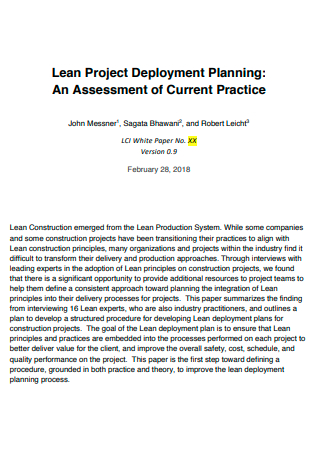
Lean Project Deployment Planning
download now -
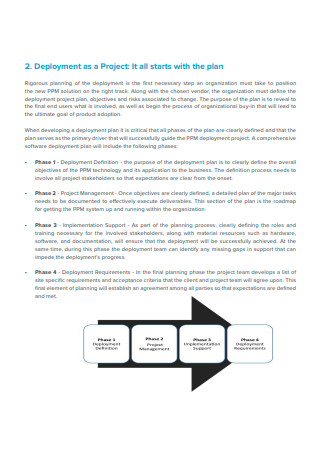
Basic Project Deployment Plan
download now -
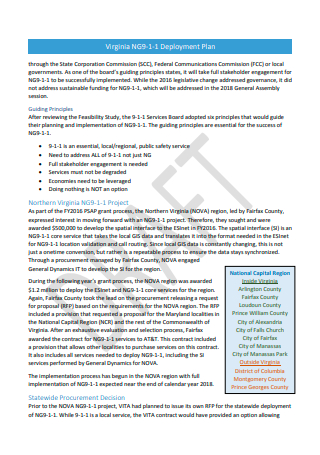
Draft Project Deployment Plan
download now -

Project Research Center Deployment Plan
download now -
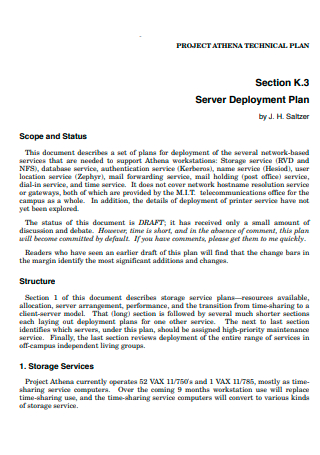
Project Server Deployment Plan
download now -

Project External Deployment Plan
download now -
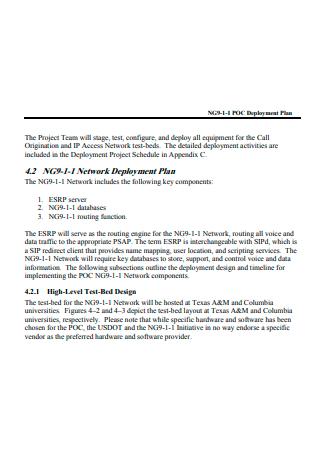
Project Team Deployment Plan
download now -
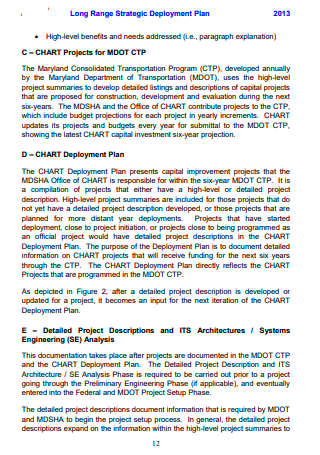
Project Strategic Deployment Plan
download now -
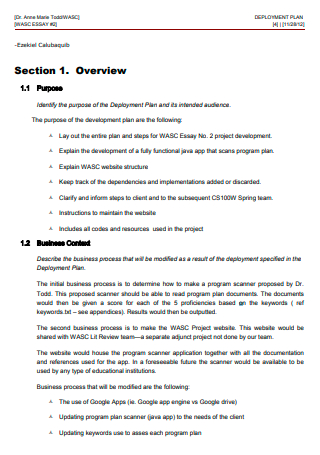
Project Deployment Plan Example
download now -
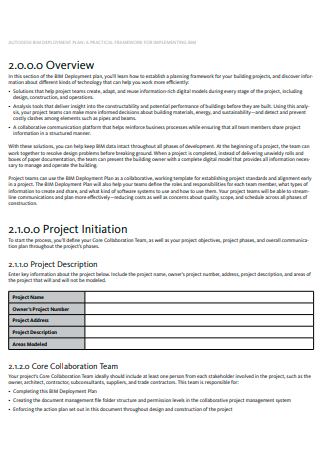
Project Initiation Deployment Plan
download now -

Project Deployment Plan in PDF
download now -
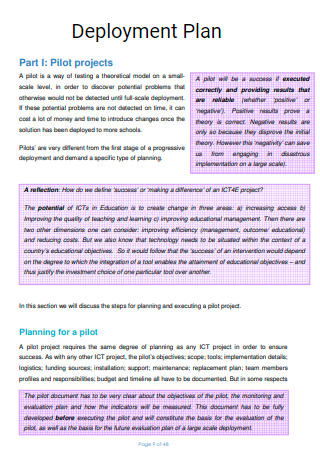
Pilot Project Deployment Plan
download now -
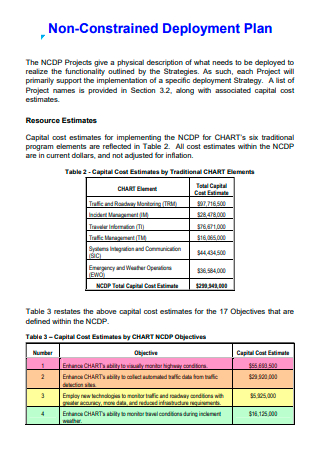
Non-Constrained Project Deployment Plan
download now -

Sample Project Deployment Services Plan
download now -

Project Deployment Business Intelligence Plan
download now -
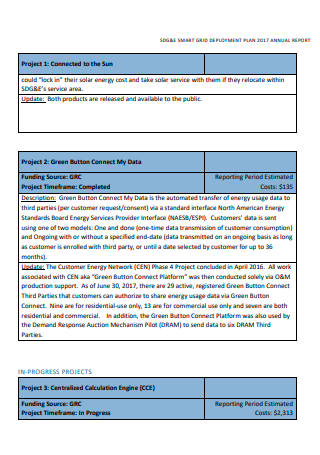
Project Deployment Plan Format
download now -
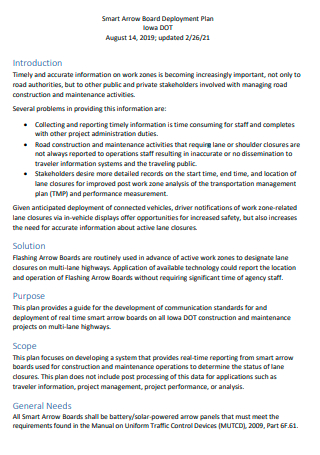
Project Board Deployment Plan
download now -
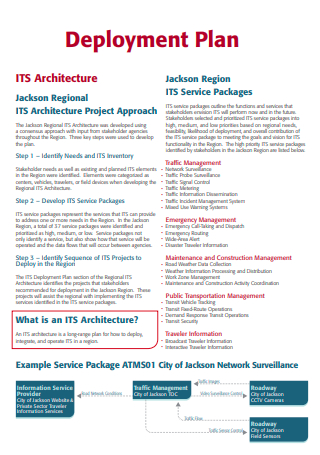
Architecture Project Deployment Plan
download now -
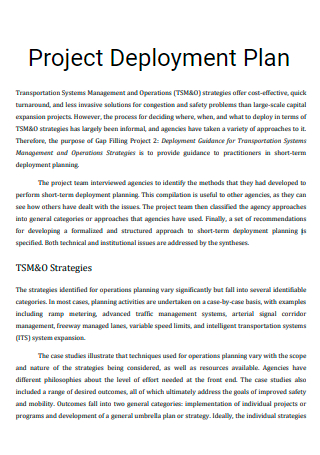
Printable Project Deployment Plan
download now -
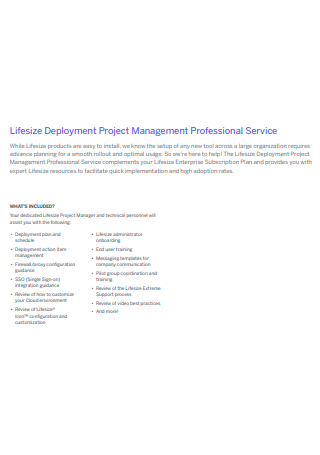
Project Management Deployment Plan
download now -
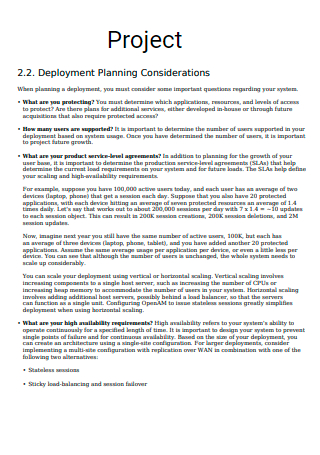
Formal Project Deployment Plan
download now -
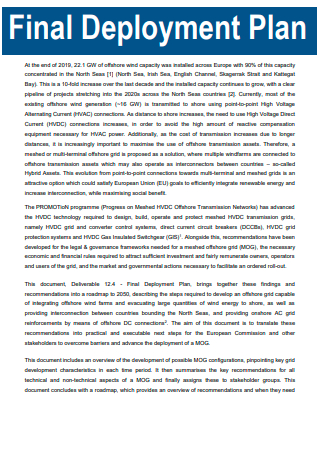
Final Project Deployment Plan
download now -
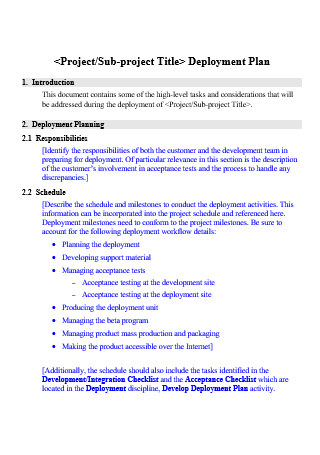
Sub Project Deployment Plan
download now -
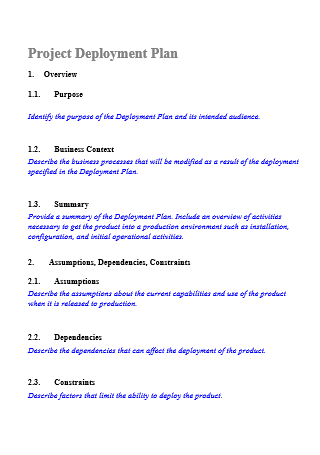
Project Deployment Plan in DOC
download now
FREE Project Deployment Plan s to Download
23+ Sample Project Deployment Plan
What Is a Project Deployment Plan?
Some Things to Keep in Mind When Creating a Deployment Plan
Elements to be Addressed In a Deployment Plan
Steps in Creating a Project Deployment Plan
FAQs
When should a deployment plan be completed?
What happens in a software project deployment?
Can deployment automation make the deployment process easier?
What Is a Project Deployment Plan?
First of all, what is deployment? Well, the term can have multiple definitions. For one, it can be referred to as the movement of troops or equipment from one place to another for military purposes. Another definition would be the act of bringing resources into effective action. And in software terms, deployment can be referred to as the process of making a software product or application ready for delivery to its customers or end-users. Also, it can be referred to as the process of developing an application or executing a policy or specification.
Now that the keyword here is covered, what is a project deployment plan? A project deployment plan is a document that offers a step-by-step guide on what has to transpire in the final stage of a project in order for it to go into production. It is critical that every single element, no matter how little, be included in this strategy. Some of the significant components here are a resource phoning another to finish the next phase in the deployment and sending an email to clients or users informing them of an outage or unavailability.
Some Things to Keep in Mind When Creating a Deployment Plan
Here is some stuff you should take note of when you start creating a deployment plan:
- End-users – When it comes to software deployment, you must consider your clients’ ease of use. What does it imply? Essentially, you should intend to test your software with a non-technical audience before releasing it to the public. Receiving information from people who are not involved in the development of the product aids in identifying flaws that might otherwise manifest after launch, which can potentially result in dissatisfied consumers. Thinking about the end-user also means that you form some sort of connection with them. Ways in which this can be done include engaging in dialogue for feedback and being patient with them.
- Versions – How do you keep track of versions of software in a deployment plan? To start with, you’re likely to go through multiple iterations of your product as you make preparations for its release. To make a clear documentation of the software/product’s different versions, the production team can resort to making use of an effective project cycle management procedure. This procedure includes both external papers, such as letting users know which version of your software guide is the most recent, and internal documentation, such as a record of code modifications for your next product release.
- Changes – As said earlier, going through multiple iterations of the same product can be a great possibility when it is being prepared for deployment. However, it should be noted that creating new products or making changes to current ones (or even multiple iterations of that same product) can prove to be a large endeavor with unforeseen effects, such as new bugs for your end consumers. In the deployment plan, you should examine if updating your software is worthwhile or will result in an even greater hassle.
- People Involved – A solid rule of thumb in deployment planning is to never attempt deployment planning at the individual scale. Because a large number of individuals are engaged in the deployment phase, it is prudent to get them in deployment planning. Another thing is that most businesses generally keep the specialists in the loop while leaving the newcomers out, which is a massive blunder. While experience is important, new employees bring fresh skill sets and novel ideas. Even if they’re working as a team, make sure each employee understands their individual position. When you distribute the burden appropriately during deployment planning, you increase the likelihood of success.
- Quality and Acceptance – A corporation can only excel in deployment planning if it has the optimal combination of technical excellence and cultural acceptance. Your team must work together to create a technically sound and unique product. Also, keep in mind that the end consumers may not always be tech-savvy. Maintain a straightforward approach. You’ll also want to keep product quality at its peak. It will aid your team’s deployment planning efforts.
- The Right Approach – The two approaches to launching your deployment plan are to roll out the entire plan at once, which necessitates training for both novice and experienced users that must take place concurrently, and confine the new plan to a comparatively tiny area of the business, such as establishing a separate unit to carry out deployments. The first method is more sustainable because no teams or their members are given preferential treatment. The second strategy, on the other hand, maybe less risky, but the department in charge may not have support from other sections of the firm.
Elements to be Addressed In a Deployment Plan
Steps in Creating a Project Deployment Plan
The deployment stage of a project will usually happen after a project has been designed and tested. However, planning for the deployment stage of the project can be most effective at the beginning, while it is still in its initial stages. With that being said, here are the steps to create an effective project deployment plan.
-
1. Summarize Goals
This is the first thing to do in creating a project deployment plan. In this step, it is important to think about what your idea of a deployment plan is and start with a clear picture of it. The target date and time in which the product is going to be deployed should also be identified in this step as well. You should also convey the impact of your deployment. The value you think it will provide to your group of users, as well as how it will influence your personnel and resources, are both included in the impact. Also, you may want to include the scope of work and establish limits of the project timeline.
-
2. Risk Documentation and Mitigation
After summarizing your project deployment goals, it’s time to identify and mitigate the risks that come with project deployment. In this step, list down all the possible risks that could jeopardize a smooth deployment. For example, not having adequate support personnel ready to run the help desk once your new product is released might be a danger. Next, give each risk a likelihood and evaluate the implications that would have on deployment if it materialized. The impact of a lack of support workers (as described in the example) might have a significant influence on end-user satisfaction. Finally, make a list of measures to do to reduce each risk. To lessen the risk in the above scenario, you may request that the support personnel be present in the office throughout the launch week.
-
3. Make a Schedule
After documenting all the possible risks and providing ways how to mitigate them, this step will soon follow. What is the importance of having a deployment schedule? Well, it divides production deployment into achievable activities that may be delegated to particular team members. Each assignment must have a person assigned to it as well as defined start and finish dates. Some of your responsibilities may include making the software update live on your site, monitoring your help desk for customer queries, and responding to any inquiries as soon as possible.
-
4. Establish Deployment Requirements
After creating a project deployment schedule, what happens next will be to establish the requirements for project deployment. This essentially means that you should determine beforehand what assets you will require for a successful rollout. Computers, routers, phones, and office space are examples of hardware. Project management platforms, help desk programs, and customer management databases are examples of software resources. Staff time should also be considered while implementing and monitoring the deployment plan. By thinking about these things ahead of time, there is a possibility of a smoother launch where you aren’t scrambling for essential equipment or team assistance.
-
5. Establish a Communication Plan
After determining what resources you require in the development plan, whether it is hardware, software, or staff requirements, this step will then follow suit, which is to establish a solid communication plan concerning project deployment. For a successful deployment, clear communication is essential. Determine who should be communicating with whom, how frequently, and how they should do it. A deployment communication plan outlines common tools that encourage uniformity in the deployment methodology of the team. Also, having a software deployment checklist can be useful since it can include specific metrics, like page loading speed, that various personnel must monitor and document every day when delivering a new program feature for clients.
FAQs
When should a deployment plan be completed?
The deployment’s completion date will be determined by the project’s timeline. Additionally, prior to deployment, the project manager should create a deployment plan and evaluate it with the whole project team. It may be accomplished a week before deployment or the day before, depending on what works best for you. After reviewing the deployment strategy, it should be given to all members of the project team for use as a guideline throughout the deployment.
What happens in a software project deployment?
Developers utilize the deployment method to provide programs, modules, updates, and fixes to users. As developers create, test, and deploy new code, their approaches influence how quickly a product responds to changes in client preferences or needs, as well as how effectively it performs in changing circumstances.
Can deployment automation make the deployment process easier?
Yes, it can make the process easier since the deployment pipeline includes deployment automation. It decreases the possibility of mistakes. Deployment automation also facilitates the implementation of a few modifications at a time rather than all at once. Subsequently, when deployment automation is being used, it also assists in the implementation of minor modifications in the production environment. Meanwhile, the developers may concentrate on the testing phase and the sending of the changes to the core build.
Project deployment plans can be a significant advantage since it helps us understand how the project is going to play out in real-time and it also outlines how the risks that may appear can be mitigated immediately and plan on how to roll along with them should they unfortunately happen. In this article, various sample templates of a project deployment plan can be obtained by you should you need references on how to do it.
